Not recd as per Picture on Website
Available 24/7
Available 24/7
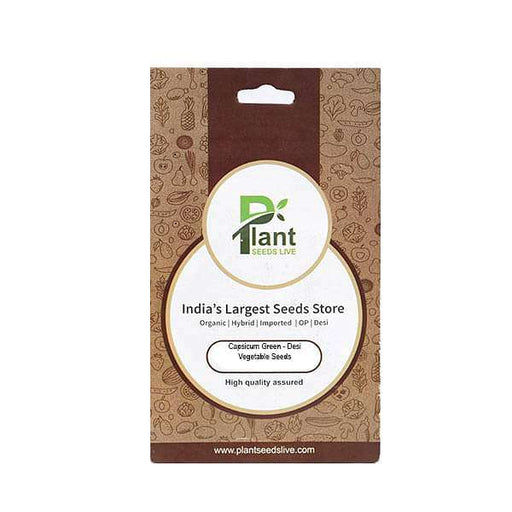
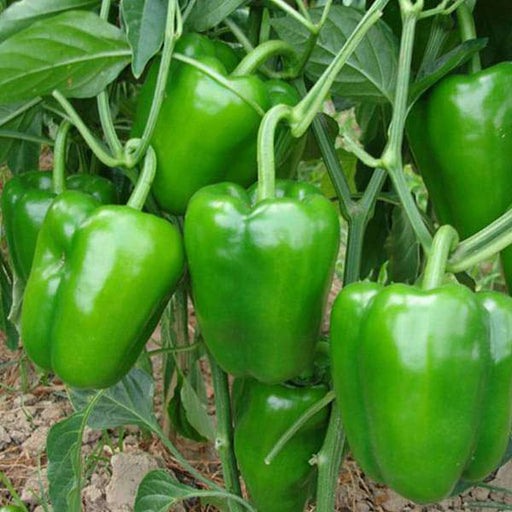 Save 25%
Save 25%
Capsicum Green - Desi Vegetable Seeds Capsicum Green, also known as bell pepper, is a vibrant and nutritious addition to your garden. Thes...
View full details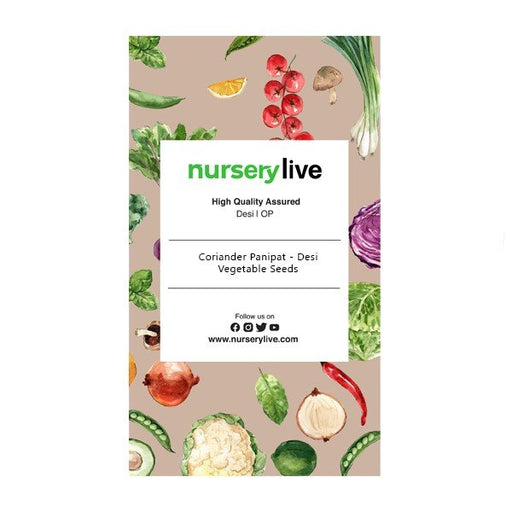
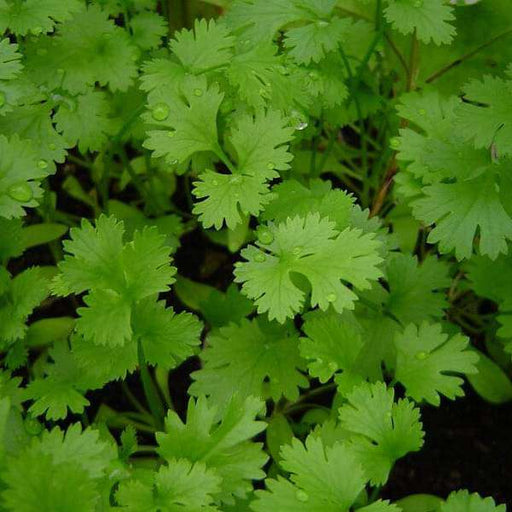 Save 25%
Save 25%
Coriander Panipat - Desi Vegetable Seeds Coriander Panipat is a premium variety of coriander seeds, cherished for its aromatic leaves and ...
View full details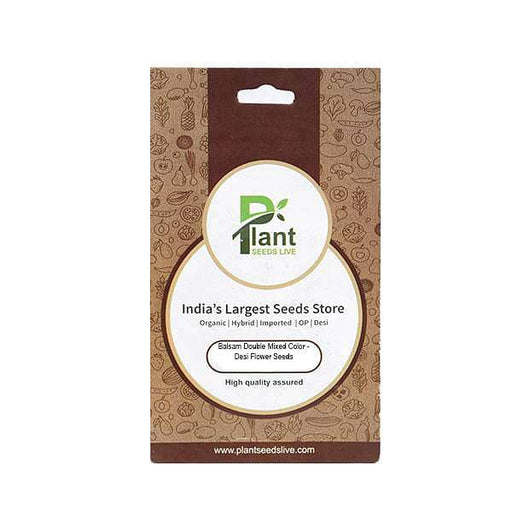
 Save 25%
Save 25%
Balsam Double Mixed Color - Desi Flower Seeds Discover the vibrant beauty of Balsam Double Mixed Color - Desi Flower Seeds, a delightful a...
View full details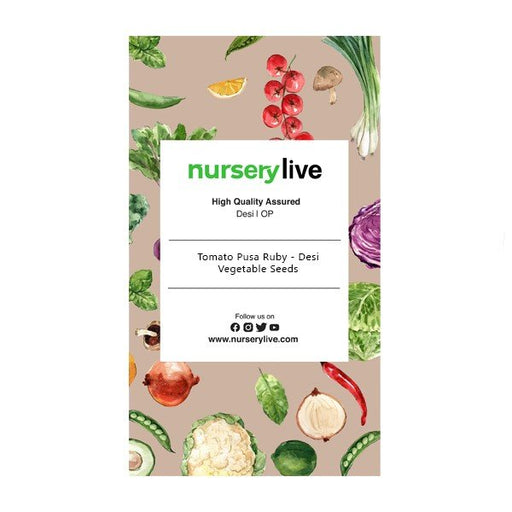
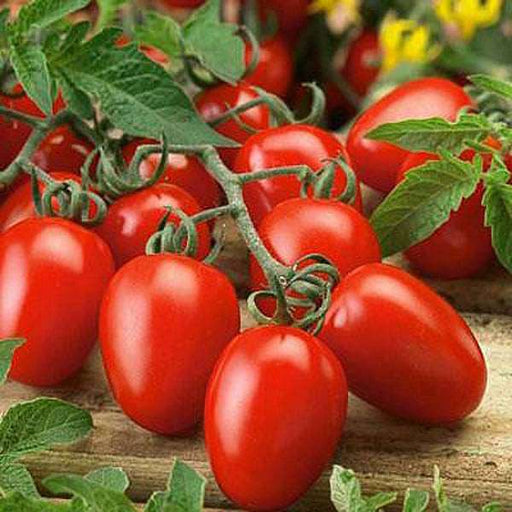 Save 25%
Save 25%
Tomato Pusa Ruby - Desi Vegetable Seeds The Tomato Pusa Ruby is a premium variety of tomato seeds, renowned for its vibrant red color, jui...
View full details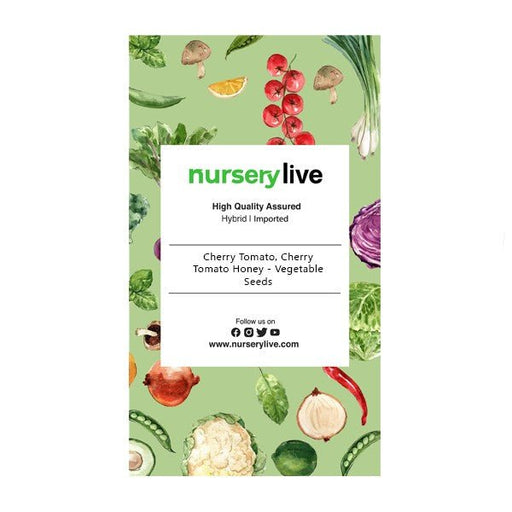
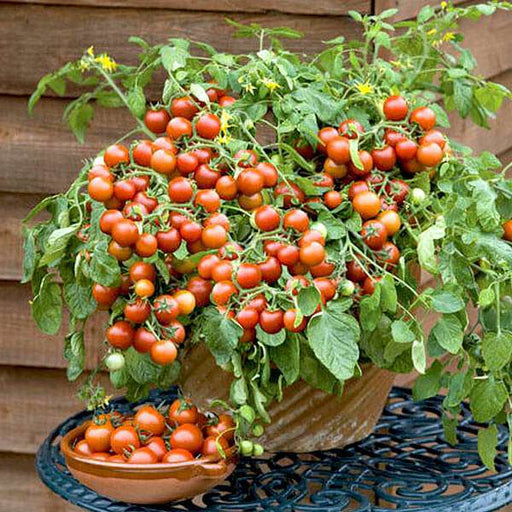 Save 25%
Save 25%
Cherry Tomato, Cherry Tomato Honey - Vegetable Seeds Discover the delightful world of Cherry Tomato Honey seeds, perfect for home gardener...
View full details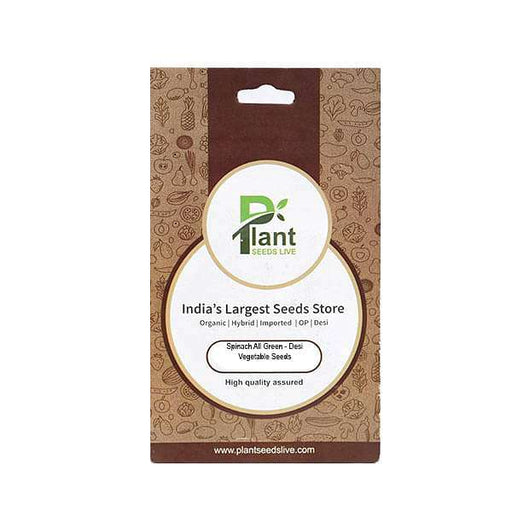
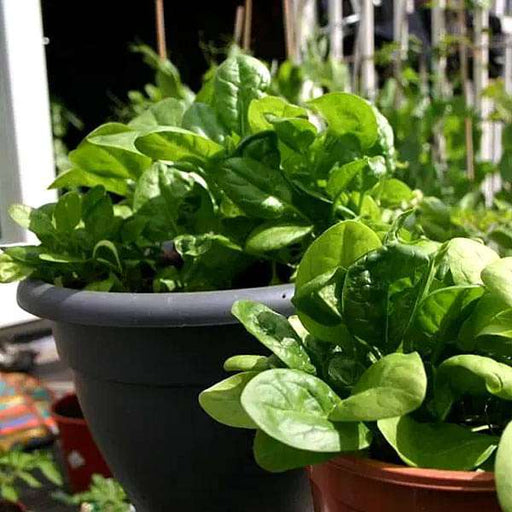 Save 25%
Save 25%
Spinach All Green - Desi Vegetable Seeds Introducing the Spinach All Green - Desi Vegetable Seeds, a premium variety of spinach that thriv...
View full details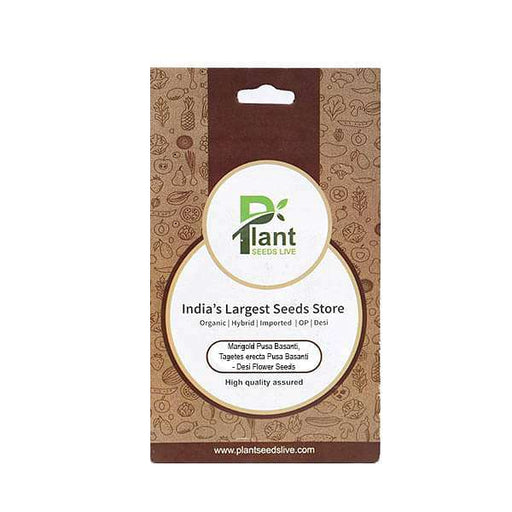
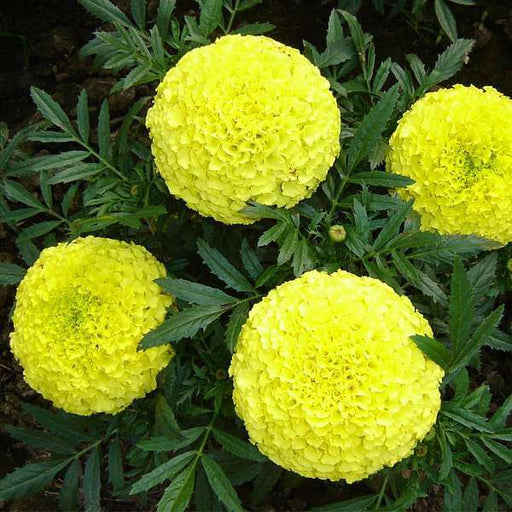 Save 25%
Save 25%
Marigold Pusa Basanti - Desi Flower Seeds Discover the vibrant beauty of Marigold Pusa Basanti, a cherished flower in Indian gardens. Know...
View full details
 Save 35%
Save 35%
Best 6 Plants for Perfect Indoor Garden Transform your living space into a lush oasis with our curated collection of the Best 6 Plants for a...
View full details
 Save up to 50%
Save up to 50%
Mini Succulent Garden Pack Transform your space with our Mini Succulent Garden Pack, featuring a delightful collection of 4 any variety beautiful s...
View full details
 Save 30%
Save 30%
5 Best Fragrant Plants Transform your garden or indoor space into a fragrant paradise with our curated selection of the 5 Best Fragrant Plants. Th...
View full details
 Save 24%
Save 24%
Set of 2 Bonsai Looking Grafted Adeniums Transform your indoor or outdoor space with our exquisite Set of 2 Bonsai Looking Grafted Adenium...
View full details Save 45%
Save 45%
Top 4 Die Hard Succulents Pack Transform your indoor or outdoor space with our Top 4 Die Hard Succulents Pack, featuring a curated selecti...
View full details
 Save 30%
Save 30%
5 Best Indoor Plants Pack Transform your living space into a lush oasis with our '5 Best Indoor Plants Pack.' This carefully curated collection fe...
View full details
 Save 25%
Save 25%
Set of 4 Evergreen Air Purifier Plant Pack Transform your indoor space into a lush, green oasis with our Set of 4 Evergreen Air Purifier Pla...
View full detailsDiscover our premium collection of cauliflower seeds, perfect for both novice and experienced gardeners. Cauliflower is a versatile vegetable that thrives in various climates, making it an excellent addition to your home garden. With a range of varieties available, you can choose from classic white to vibrant purple and green cauliflowers, each offering unique flavors and textures to elevate your culinary creations.
What makes our cauliflower seeds special is their high germination rate and resilience against common pests and diseases. These seeds are carefully selected to ensure robust growth and exceptional yield. Whether you're growing for personal use or for market sales, our cauliflower seeds will provide you with healthy, delicious heads that are packed with nutrients.
Growing cauliflower is a rewarding experience, and with our detailed growing instructions, you'll be on your way to a bountiful harvest. Cauliflower is not only a nutritious addition to your diet but also a sustainable choice for the environment, as it requires less water than many other crops and can be grown in diverse soil types.
Scientifically known as Brassica oleracea var. botrytis, cauliflower has been cultivated for centuries, with origins tracing back to the Mediterranean region. Historical records indicate that it was first cultivated in the 6th century and gained popularity in Europe during the Renaissance. Today, it is a staple in many cuisines worldwide, celebrated for its versatility and health benefits.
From an environmental perspective, cauliflower is a sustainable crop that can be grown in various climates and soil types. Its ability to thrive in cooler temperatures makes it an excellent choice for fall and spring gardens. Additionally, cauliflower contributes to soil health by improving soil structure and promoting biodiversity, making it a valuable addition to any sustainable gardening practice.
White, purple, or green? Expand your horizons with our colorful array of cauliflower seed varieties, perfect for transforming your garden and dinner table into a vibrant wonderland.
Is your cauliflower seed germination feeling sluggish? Fear not! Follow our top tips to encourage your cauliflower seeds to sprout and grow into the superstar veggies they were destined to be.
Don't let those precious cauliflower seeds go to waste! Learn the art of cauliflower seed saving and keep your garden stocked with fabulous florets for seasons to come.
Your cauliflower seeds have sprouted – now what? Nurture your baby plants with our essential guide to cauliflower seedling care, ensuring a healthy and bountiful harvest.
Say goodbye to chemicals! Choose from our range of organic cauliflower seeds and cultivate a garden that's kinder to your health and the planet.
Step back in time with heirloom cauliflower seeds! These vintage veggies offer unique flavors and shapes, making your garden and kitchen a living history exhibit.
On the hunt for the perfect cauliflower seed source? Browse our list of top-quality cauliflower seed suppliers and find the seeds of your dreams in no time.
Keep your cauliflower seeds fresh and ready to plant with our smart storage tips. Future-you will thank you when next season's planting rolls around.
Don't let pathogens spoil your cauliflower seed party! Learn about common cauliflower seed diseases and how to prevent them from wreaking havoc in your garden.
Give your cauliflower seeds room to grow! Discover the ideal spacing for planting cauliflower seeds, ensuring a flourishing garden filled with delightful florets.
Planting cauliflower seeds – how deep is deep enough? Uncover the optimal planting depth for your cauliflower seeds to guarantee a successful and thriving garden.
How cold is too cold? Learn the perfect temperature range for cauliflower seed germination and growth, guaranteeing a bountiful harvest of tasty florets.
Feed your cauliflower seeds the nutrients they crave! Explore the world of fertilizers and find the perfect mix for growing big, beautiful cauliflowers.
Quench your cauliflower seeds' thirst without drowning them. Discover the delicate balance of watering cauliflower seeds, ensuring a happy, hydrated garden.
Best friends forever – for your cauliflower seeds, that is! Uncover the top companion plants for your cauliflower garden, promoting harmony and mutual growth.
Unwanted guests nibbling on your cauliflower seedlings? Identify common cauliflower seed pests and learn how to keep them at bay without sacrificing your crop.
The time has come to collect your cauliflower bounty! Master the art of cauliflower seed harvesting for a delicious and nutritious yield.
Tired of the same old cauliflower dishes? Get inspired with scrumptious cauliflower seed recipes that will make your taste buds sing.
Who knew cauliflower seeds could be so good for you? Discover the surprising health benefits of cauliflower seeds and add a nutrient-rich kick to your diet.
Amaze your friends with fascinating cauliflower seed trivia! Dig up little-known facts about cauliflower seeds and become the life of the garden party.
The best time to plant Cauliflower seeds is during the cooler months, such as late summer or early fall, when temperatures are between 60-65°F.
Cauliflower seeds typically germinate in 7-10 days, depending on the growing conditions.
Cauliflower requires full sun exposure, which means at least 6 hours of direct sunlight per day.
Cauliflower seeds should be watered regularly, about once a week, or more often during hot, dry weather.
Yes, Cauliflower seeds can be grown in a container as long as it is large enough to accommodate the mature plant and has adequate drainage.
Cauliflower seeds should be planted about 1/4 inch deep.
Cauliflower plants can be protected from pests by using organic pesticides or companion planting with herbs such as mint or basil.
Cauliflower plants should be fertilized once a month with a balanced fertilizer, or as directed on the package.
Cauliflower can be harvested when the heads are firm and compact, and the buds are tightly closed. Cut the head from the plant with a sharp knife.
Yes, Cauliflower seeds can be saved for the next season by allowing the plant to mature fully and produce seed pods. Collect the pods and allow them to dry completely before storing.
Cauliflower seeds should be stored in a cool, dry place in an airtight container to maintain their viability.
The soil should be well-draining and rich in organic matter. It's important to loosen the soil to a depth of at least 6-8 inches and mix in compost or well-rotted manure before planting Cauliflower seeds.
Cauliflower seeds should be spaced about 18-24 inches apart to allow enough room for the mature plant to grow.
Yes, Cauliflower seeds can be grown in a greenhouse as long as there is enough space and light for the plants to grow properly.
Cauliflower plants can be susceptible to diseases such as clubroot and powdery mildew. To prevent these diseases, make sure the soil is well-draining and avoid overwatering the plants.
Cauliflower seedlings can be transplanted when they are about 4-6 weeks old and have developed 2-3 true leaves. Transplant them into well-prepared soil and water thoroughly.
Cauliflower plants do not usually require support, but if they become top-heavy, you can stake them to prevent them from falling over.
One Cauliflower plant will produce one head, but some varieties may produce multiple heads.